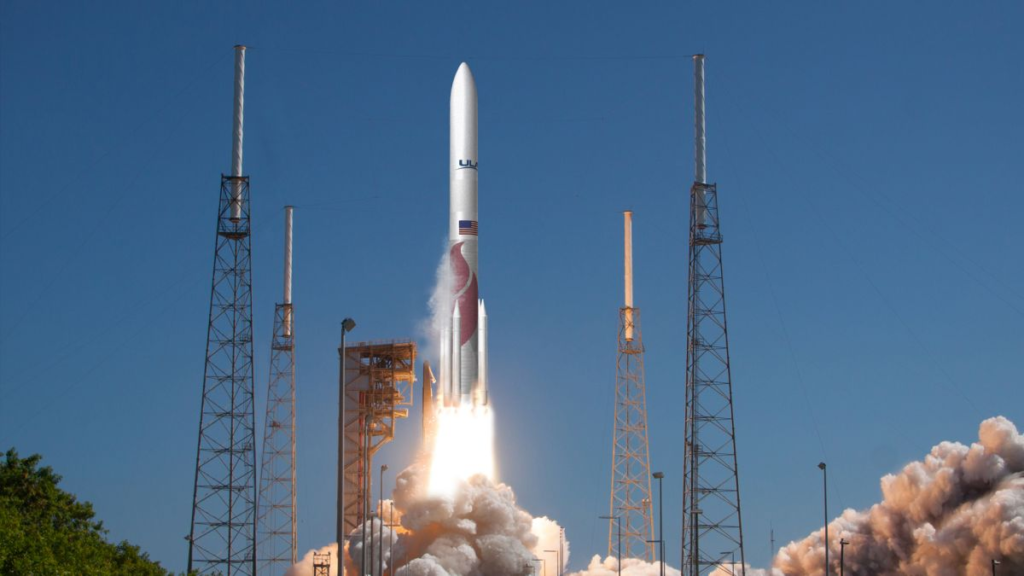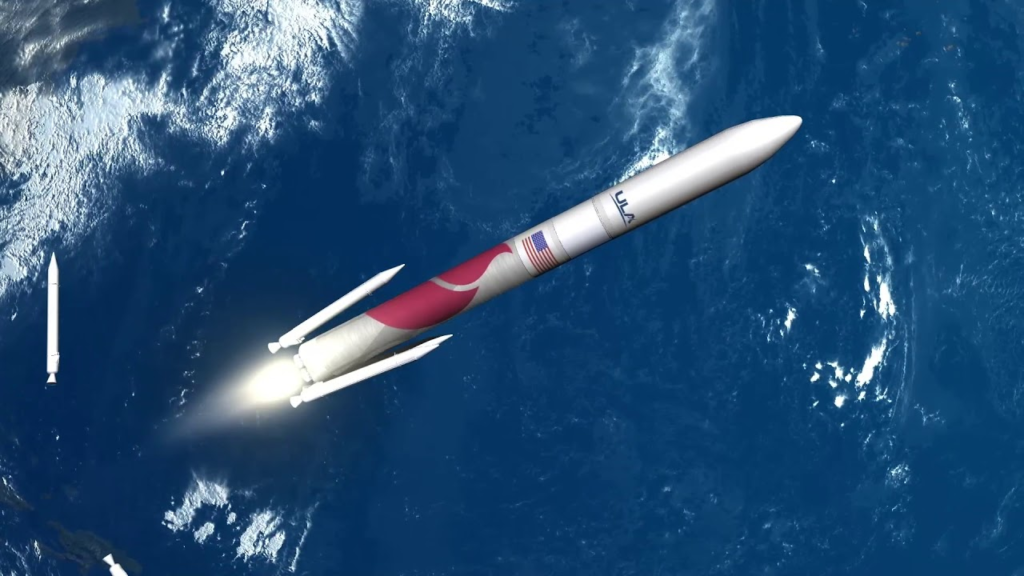
Vulcan Is Only Weeks Away From Its Maiden Flight
United Launch Alliance has been sending payloads into orbit for decades and amassed an impressive record. While other rockets such as the Delta IV Heavy and Atlas V slowly come to an end with only a set amount of missions left, Vulcan is getting ready to take the stage. ULA has put a lot into this rocket and its success is paramount for the company.
In the last couple of months, we have seen an increased amount of updates and progress as the maiden launch closes in. After arriving at the company’s launch site in the Cape earlier this month, the rocket is now being stacked. From here we can expect some exciting pre launch testing of the two BE-4 engines and other components.
If everything goes according to plan a launch in March is still very possible. This being said, recent delays have pushed this mission back further than ULA was hoping for. With so many future launches riding on this initial flight success, the company is working to make sure it’s a success. Here I will go more in-depth into Vulcan’s stacking progress, what tests are next, what to expect in the coming weeks, and more.
Vulcan Stacked

Vulcan arrived at the Cape on the 21st and was unloaded the next day. By now, all elements of the first United Launch Alliance (ULA) Vulcan Centaur rocket have arrived at Cape Canaveral to begin processing towards the inaugural test flight of ULA’s next generation rocket. Hardware was transported from ULA’s production factory in Decatur, Alabama, to the Florida launch site aboard the latest voyage of the RocketShip. Soon after arrival, the first stage went vertical in preparation for stacking the interstage and the upper stage. Yesterday ULA CEO Tory Bruno tweeted saying, “And second, the 18.8 foot tall interstage…” This included a short timelapse of the interstage being installed on the first stage.
ULA also tweeted mentioning, “Last week, the interstage was attached to #VulcanRocket! The hollow barrel segment connects the Vulcan stages and encloses the twin RL10 upper stage engines during the boost phase of flight.” With the interstage installed, the only other main component needed for stacking is the upper stage itself. Finally, yesterday Tory tweeted one more time commenting, “Now that is a beautiful sight!” This included an image of the Centaur V upper stage getting ready to be lifted and installed on the rocket. Once complete we will see almost a full Vulcan and the true size of this rocket.
The booster measures 109.2 feet (33.3 meters) in length and 17.7 feet (5.4 meters) in diameter. Made of internal orthogrid aluminum construction to create a structurally stable stage, it is equipped with two BE-4 main engines, each producing approximately 550,000 pounds (2.45 mega-Newtons) of thrust to lift Vulcan out of the atmosphere on the way to orbit. Centaur V, with its pressure-stabilized stainless-steel tanks, is 38.5 feet (11.7 meters) in length and 17.7 feet (5.4 meters) in diameter. The cryogenic stage features two RL10C-1-1A engines, each producing 23,825 pounds (106 kilo-Newtons) of thrust to deliver the inaugural flight payloads to three different orbits: low Earth orbit, a high-energy orbit at nearly lunar distance, and an Earth escape orbit into interplanetary space.
Once fully stacked and ready for testing, Vulcan will undergo a final series of tests to verify its readiness for flight consisting of multiple tanking tests and a wet dress rehearsal, culminating in flight readiness firing likely next month in February, which will be the final step prior to launch. Following the successful final testing, Astrobotic and the other payloads will be installed on the launch vehicle.
In addition to the installation of the upper stage, this Vulcan maiden flight will also feature twin solid rocket boosters. Back in October of last year, these two boosters arrived at the Cape Canaveral launch site. The SRBs will remain secured on their Over the Road Transporters (ORTs) until each booster is brought to the Vertical Integration Facility ((VIF) for hoisting and attachment to the Vulcan first stage during the launch campaign. Something we can look forward to in the coming weeks. If all the initial testing goes well, a launch in late March is possible. Originally, Vulcan was intended to arrive at the launch site in November and finish testing in December. It’s a couple of months behind this estimate but still making good progress.
First Launch

Now that we know more about Vulcan’s progress over the last couple of days, we can take a closer look at the rocket itself and why this maiden flight is so important. One of the most exciting parts of this upcoming launch is the first flight test of Blue Origin’s BE-4 engines. For over a decade, the company has been working on these engines and we are only weeks away from seeing them fly for the first time. The success of this mission is not only a big deal for ULA but also for Blue Origin.
When it comes to this engine’s design, Blue Origin points out that they chose LNG because it is highly efficient, low cost, and widely available. Unlike kerosene, LNG can be used to self-pressurize its tank. Known as autogenous repressurization, this eliminates the need for costly and complex systems that draw on Earth’s scarce helium reserves. LNG also possesses clean combustion characteristics even at low throttle, simplifying engine reuse compared to kerosene fuels. BE-4 was designed from the beginning to be a medium-performing version of a high-performance architecture. A conscious design choice made to lower development risk while attempting to meet performance, schedule and reusability requirements. A lot of these decisions were made to help with the reuse process of BE-4. While this obviously has applications to New Glenn for example which is intended to reuse the booster, ULA might even take advantage of it in the future.
Specifically, not long ago ULA CEO Tory Bruno tweeted saying, “At the moment, component reuse (SMART) is the most economically clear return to factory approach. Upper stages that are reused should do so in space” ULA estimated this technology would reduce the cost of the first stage propulsion by 90%, and 65% of the total first-stage cost. After separation, the nose assembly extends to position the HIAD such that it will clear the separation plane when inflated. From here, it would continue through Earth’s atmosphere before parachute deployment. This would slow down the two BE-4s and additional technology significantly before a planned soft water landing. Here they would float on an inflatable aeroshell before being recovered by ULA and taken back to land for refurbishment. It’s important to point out that none of this will be attempted on the maiden flight and ULA may or may not try this in the future.
Focusing back on this inaugural mission, the Certification-1 launch will deliver two Project Kuiper demonstration satellites into low Earth orbit, place the Astrobotic Peregrine commercial lunar lander in a highly elliptical orbit more than 225,000 miles (360,000 km) above Earth to intercept the Moon, and carry a Celestis Memorial Spaceflight Payload beyond the Earth-Moon system to orbit the Sun forever. In addition, this commercial mission is part of ULA’s requirement to meet the U.S. Space Force certification of its new launch vehicle. Mark Peller, vice president of Major Development, stated “We are committed to ensuring we fly the first certification mission and stay on schedule to achieve U.S. Space Force certification of Vulcan in advance of our first national security space mission in 4th quarter 2023.”
As partially mentioned prior, Vulcan will utilize two additional boosters on the side of the core stage. In this case, Vulcan integrates up to six Northrop Grumman Graphite Epoxy Motor (GEM) 63XL Solid Rocket Boosters (SRBs). They are constructed out of a graphite-epoxy composite with the throttle profile designed into the propellant grain. GEM solids supported the Delta II and Delta IV rockets, and the GEM 63 variant has already flown on ULA’s Atlas V rocket. Vulcan will also rely on two RL10C engines to power its second stage. Logging an impressive record of nearly 400 successful flights and nearly 700 firings in space, RL10 engines, manufactured by Aerojet Rocketdyne, harness the power of high-energy liquid hydrogen. The RL10 boasts a precision control system and restart capability to accurately place payloads into orbit.
ULA highlights that access to orbit remains a critical hurdle for many missions. However, the company is working to provide flexible and cost-effective multi-manifest solutions to overcome this barrier. With multi-manifest, two or more spacecraft are integrated on a launch vehicle using available performance and volume margin that would otherwise go unused — optimizing mass to orbit and enabling missions. Multi-Manifest on a Vulcan rocket provides a highly reliable and schedule certain launch solution for spacecraft ranging from CubeSats to small sats and beyond. With progress coming along, we are closer than ever to the first launch of this rocket. Not long ago Tory Bruno said, “This has been an incredible journey to get to this point and I am so proud of the development team. “We look forward to the first flight as Vulcan offers all customers higher performance and greater affordability while continuing to deliver our unmatched reliability.”
Conclusion
Vulcan is finishing its stacking process as I speak. Soon its upper stage will be installed and Vulcan will almost be ready for pre launch testing. Once complete, assuming the test results were perfect, it will launch and attempt to deploy multiple satellites and demonstrate its capabilities. We will have to wait and see how it progresses and the impact it has on the space industry.